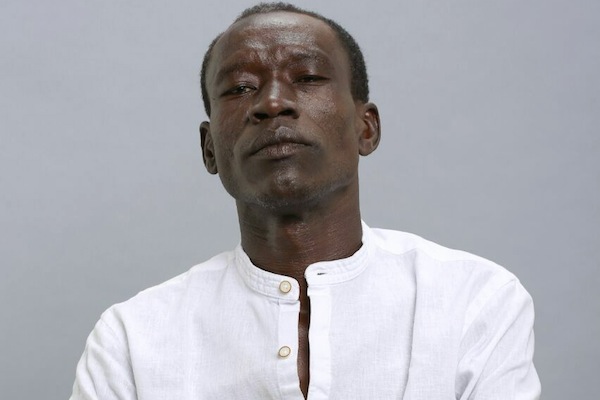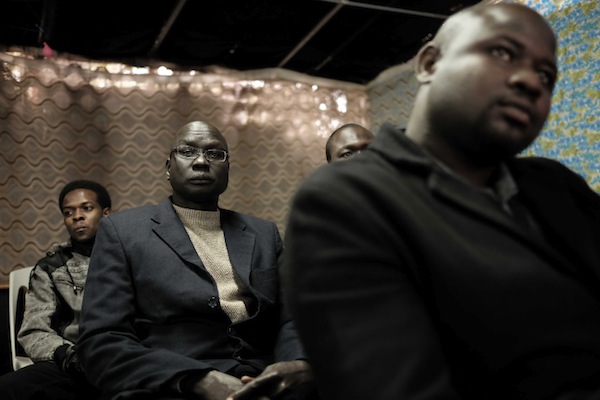Estimates show that hundreds of refugees from the Nuba Mountains, who fled the fighting in Sudan, currently live in Israel. Despite the danger they face in their home country, both Israel and the international community ignore their plight.
By Dror Sadot

Over the years, tens of thousands of African refugees have entered Israel. By using the term “African asylum seekers” (and especially when the government labels them “infiltrators”), it is difficult to tell the difference between the different refugee communities.
But there is great diversity among the asylum seeker community in Israel. According to estimates, there are several hundred Nuba people — refugees from the Sudanese states of South Kordofan and Blue Nile, both of them located in the southern region of Sudan — where a bloody civil war has raged, which includes the wholesale murder of civilians by the Sudanese regime. A new position paper published by the Hotline for Migrants and Refugees [Hebrew] offers a glimpse into the area of Sudan that has been the target of ethnic cleansing for decades.
My oldest brother served as the head of the Christian community where I grew up. He was arrested when his religious identity was discovered, and was suspected of being involved in the resistance movement against the regime and spreading political and Christian ideas. He fled Sudan and I, on that same day, when I was only 12, was taken in for questioning by armed men from the security forces, straight from work. I was kicked out of school and my friends were forbidden from speaking to me. We lived under surveillance and could not be Christian. When I was 15 I was violently arrested and my mother was beaten to death. (Thomas Abdullah Sudan Azaq, Nuba asylum seeker)
The tragic story of South Kordofan — including the Nuba Mountains and Blue Nile — began dozens of years ago. Yet the crisis has worsened since South Sudan declared its independence six years ago. The Sudanese regime, led by President Omar al-Bashir, began forcing African tribes to convert to Islam 20 years ago, leading to an uprising. Those who refused to convert were tortured and murdered, and the regime bombed entire villages. In 1993, the government in Khartoum began its genocidal campaign, while preventing preventing humanitarian aid from reaching the tribes for years.
I saw Omar al-Bashir’s men arresting and shooting Nuba, leaving their bodies in the street. I saw many bodies of Nuba rotting because there was no possibility to properly bury them… Upon my return to Khartoum, I reported on what was happening in the Nuba Mountains to the members of the General Nubian Union, which marked me as a dissident. For a long period, Sudanese security forces would follow me and other members of the General Nubian Union. Some of the Union members were arrested, released, and re-arrested. Among them are those who disappeared and were likely murdered by the regime, and there are those who managed to flee Sudan and find asylum in other countries. (Nasser Shadad Ahmad Abusadur, Nubian asylum seeker)
Fighting resumed in 2011, following the establishment of South Sudan. The Nuba, despite fighting alongside the South Sudanese, were left just north of the border dividing South and North Sudan, opened a front against the regime. They reported on mass ethnic cleansing and massacres against civilians by regime-backed militias. Over 4,000 bombs were dropped on civilian areas by the al-Bashir regime, which destroyed homes, hospitals, and schools. Thousands were killed.

By 2014, approximately two million people were affected by the fighting in South Kordofan. Almost a million people were in need of humanitarian aid, half of whom were uprooted from their homes. Approximately 250,000 refugees fled to South Sudan since the beginning of the fighting in 2011 and until 2016.
Seeing humans, not ‘problems’
Recently, following legal procedures and pressure by the courts, it seems that Israel is changing its attitude toward Darfuri asylum seekers (from West Sudan). It is hard to say that this “improves Israel’s attitude,” as the state has continued denying the genocide taking place in Sudan, while ignoring thousands of asylum requests submitted by Darfuri refugees.

Unofficially, however, one can see Israel now stuttering. This includes a rescinded legal opinion that recommended granting refugee status to all Darfuri asylum seekers who do not hail from Arab tribes; a decision to give 200 humanitarian permits (rather than refugee status) to Darfuris; and a procedure to refrain from sending them to the Holot detention center in Israel’s south. But only few people know what is happening in other areas of Sudan. The stories of the Nuba people are barely heard, neither in Israel nor across the world. Israel’s authorities ignore them altogether.
The demand to differentiate between the various people who came here from Africa is not petty — it is a matter of principle. Differentiating between dissidents and supporters of the regime; between those who seek asylum for fleeing forced labor, and political activists; between those who are persecuted due to their ethnic identities and those who rose up and managed to escape. This is how we treat them as humans, rather than as a “problem.”
Dror Sadot is the spokesperson for the Hotline for Migrants and Refugees. This article was first published in Hebrew on Local Call. Read it here.
